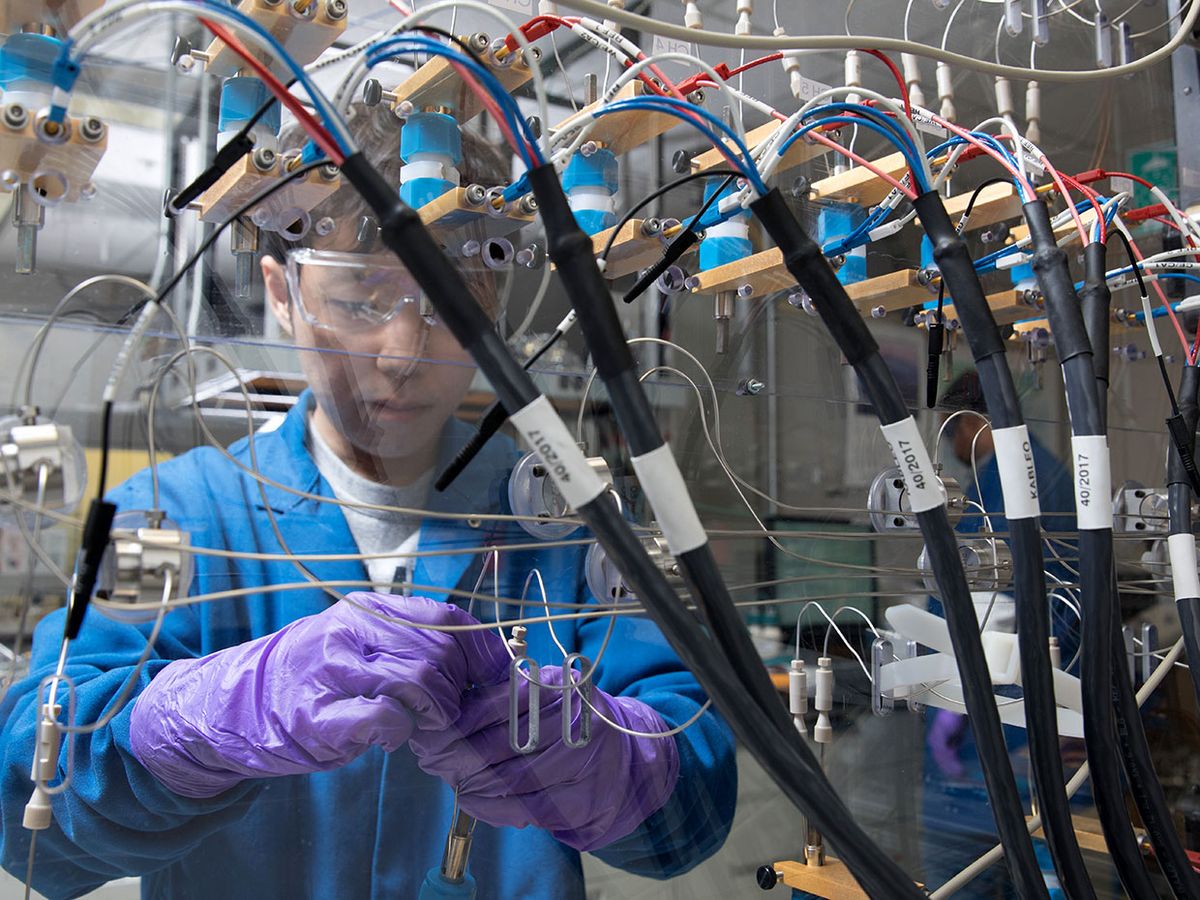IBM lifted the veil this week on a new battery for EVs, consumer devices, and electric grid storage that it says could be built from minerals and compounds found in seawater. (By contrast, many present-day batteries must source precious minerals like cobalt from dangerous and exploitative political regimes.) The battery is also touted as being non-flammable and able to recharge 80 percent of its capacity in five minutes.
The battery’s specs are, says Donald Sadoway, MIT professor of materials chemistry, “staggering.” Some details are available in a Dec. 18 blog posted to IBM’s website. Yet, Sadoway adds, lacking any substantive data on the device, he has “no basis with which to be able to confirm or deny” the company’s claims.
Young-hye Na, materials innovation manager for IBM Research’s battery division, says IBM has partnered with Mercedes Benz R&D North America, as well as a Japanese chemical company (Central Glass) to refine the battery’s electrolyte, and a Silicon Valley battery startup (Sidus) to test the battery.
“In initial lab tests, our battery demonstrated hundreds to thousands of cycles with 80 percent retention of its original capacity,” Na says. The battery’s cycle life and ability to retain charge is, she says, a subject of ongoing investigation by the group.
Na says IBM has built prototype pouch battery cells in the lab which give her group confidence that they could develop a commercial product for limited applications (e.g. portable power tools) within one to two years. Developing the technology to compete with industry-standard lithium ions for electric vehicle powertrains will take, she says, a “longer time.”
To Sadoway’s frustration, the group has revealed precious little technical information about their battery’s chemistry, configuration, or design. No doubt trade secrets must always be guarded. But, he says, there’s a middle ground in which engineers, technologists, and potential industry partners can be satisfied with the publicly shared details about a battery’s operations—without giving the entire game away.
“If you’ve got something that’s truly remarkable, you want to disclose what it is,” Sadoway says. “Because presumably, they’ve already done their background work in terms of protecting intellectual property and so on. So it strikes me as kind of odd that they would make these announcements without providing any evidence to support them.”
Na says the seawater-derived materials in the battery—putting the “blue” in Big Blue—present an alternative future in which widespread battery production could be scaled up without being constrained by the availability of dwindling supplies of rare earths and so-called “conflict minerals.”
To extract source materials for the battery from seawater would not necessarily be a trivial operation, Na says. Extraction techniques may still need to be developed to harvest the needed quantities of the ocean’s dissolved substances—among them, according to Encyclopedia Britannica, magnesium, potassium, boron, strontium, and fluoride.
However, Na adds, “Extracting materials from seawater would still remain more environmentally friendly compared to the environmental impacts of terrestrial mining.”
The formulation of the battery’s electrolyte (the medium through which electrons and ions travel during a battery’s charging and discharging cycles) is essential to configuring the device’s performance, Na says. As such, she says her team believes it can tweak the chemistry enough to make it competitive as a grid energy storage alternative—in which, she says, “cycle life and stability is key.”
Other performance boosts that IBM touts in its announcement include the battery’s reported improvement in cost, charging time, power/energy density, and energy efficiency.
Sadoway says he thinks the fact that IBM’s blog specifically calls out the battery’s non-reliance on either nickel or cobalt may indicate it’s still a lithium-based battery.
“Why would you call those out unless you’re trying to differentiate yourself from other people who are in the lithium space?” he says. “Otherwise you just say, ‘We use earth-abundant elements that are non-toxic and ethically sourced and guilt-free.’ It could either mean a new variant of lithium chemistry, whether it’s lithium ion or lithium metal. Or maybe it’s just a different chemistry altogether. … The details are just so scant. Who knows what it is?”
Margo Anderson is senior associate editor and telecommunications editor at IEEE Spectrum. She has a bachelor’s degree in physics and a master’s degree in astrophysics.



